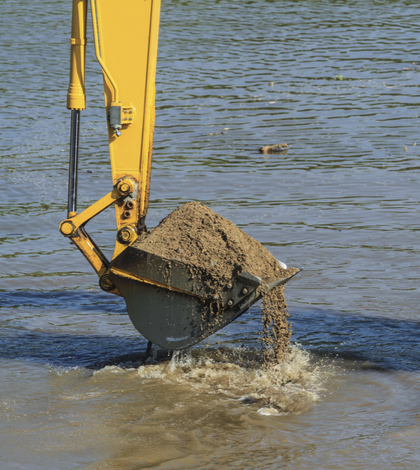Houston-based CEMEX, the State Lands Commission, the California Coastal Commission and the City of Marina have reached an historic four-way settlement agreement that ends coastal sand mining in Monterey County and in the continental United States. The agreement provides a December 31, 2020 end date for CEMEX’s sand extraction operations and interim operating conditions to protect coastal resources while the unpermitted development is phased out. As part of the resolution CEMEX has withdrawn its filings detailing multiple reviews of the Lapis sand plant operations by various regulatory agencies over the past 50 years.
The Lapis plant is located on approximately 400 acres with more than a mile of ocean front in Marina, CA. The sand provided by the plant has been used in countless California infrastructure projects, as well as environmentally-beneficial programs like water treatment and even by the Monterey Bay Aquarium. Lapis sand continues to be a key component of a unique concrete product specified by CalTrans for use in bridge roadways to enhance safety.
The four entities have diligently worked to negotiate an agreement that averts protracted, expensive litigation and that results in shuttering the coastal sand mining operation. The core terms are that CEMEX’s sand dredge mining operation will be phased-out by the end of 2020 and all plant operations will cease in 2023, maximum sand extraction until then is limited to 240,000 tons per year (less than the current rate of 300,000 tons per year), all alleged violations by the Coastal Commission, the State Lands Commission, and the city of Marina are resolved, and CEMEX agrees to sell the site at less-then-market value to a nonprofit or governmental entity that will conserve the land and provide public access.
“This end-of-an-era agreement is an historic victory for environmental conservation nationwide and I am proud to uphold these values for California, where our coast is cherished for its cultural, environmental, and economic importance,” said Lt. Governor and State Lands Commission Chair Gavin Newsom. “It’s also a shining illustration that grassroots advocacy is alive and well in California, where the passion and energy of the local community was instrumental in driving this agreement. The combined resolve and collaboration of community, industry, and government to dedicate these lands for future conservation exemplifies bottom-up, citizen-driven governance.”
The 400-acre site in the city of Marina has been used for sand mining since the early 1900s. The proposed settlement is the result of more than a year of negotiations between CEMEX and the other involved parties.
“We have spent countless hours in confidential talks forging a solution to stop the truly regrettable loss of sand and to protect the beaches in the Monterey Bay,” said the commission’s Chief of Enforcement Lisa Haage. “We are gratified that we have been able to reach a proposed solution here with Cemex, one that will truly benefit the public. Around the world, beaches are treasured and protected to support public recreation and protect against sea level rise, and finally we will be able to do that here as well.”
“CEMEX is committed to caring for our employees, our communities and the environment. We believe this agreement honors those fundamental principles,” said Eric Wittmann, CEMEX USA region president – West Region. “The agreement balances the interests of all the stakeholders of the Lapis operation, including our employees, suppliers, customers and the community.”
 California Water News Daily Your Source For Water News in California
California Water News Daily Your Source For Water News in California


